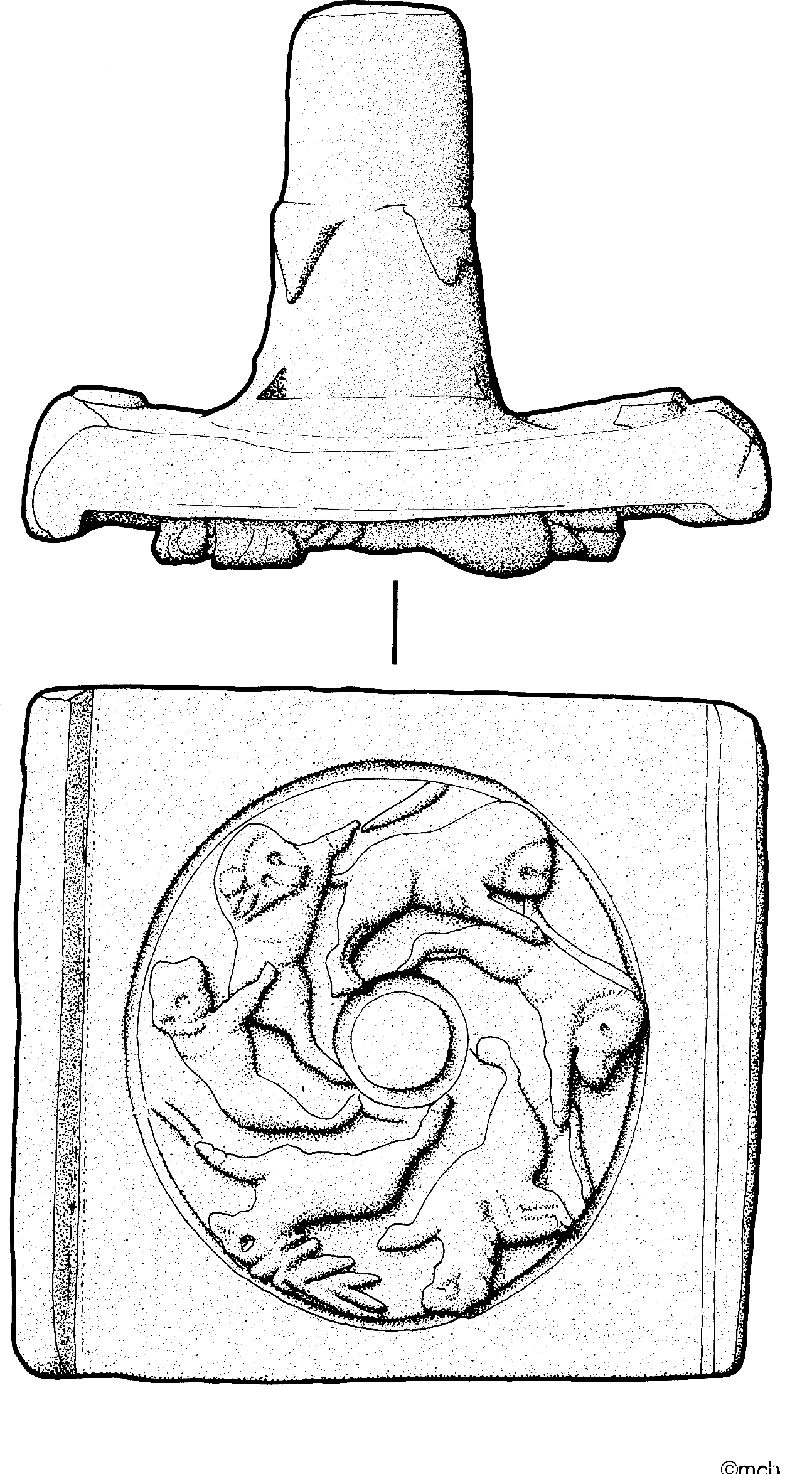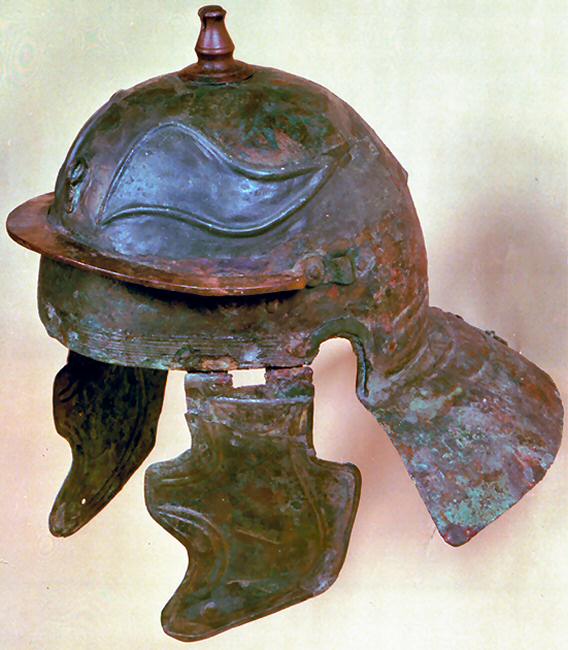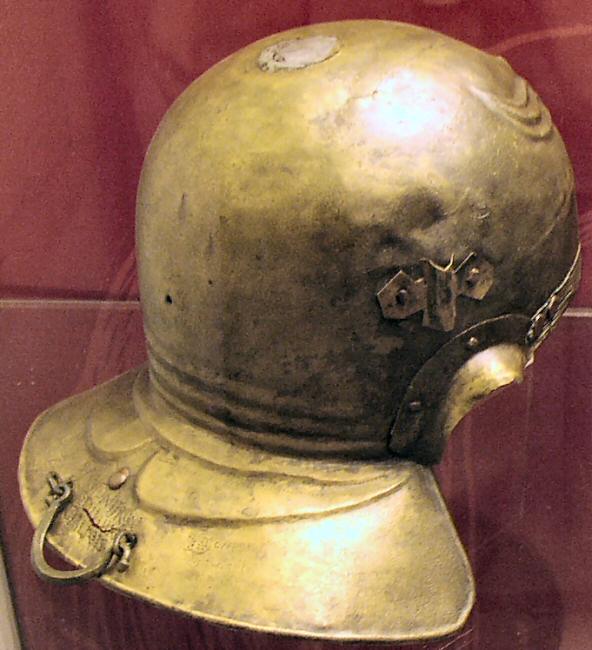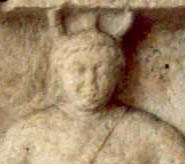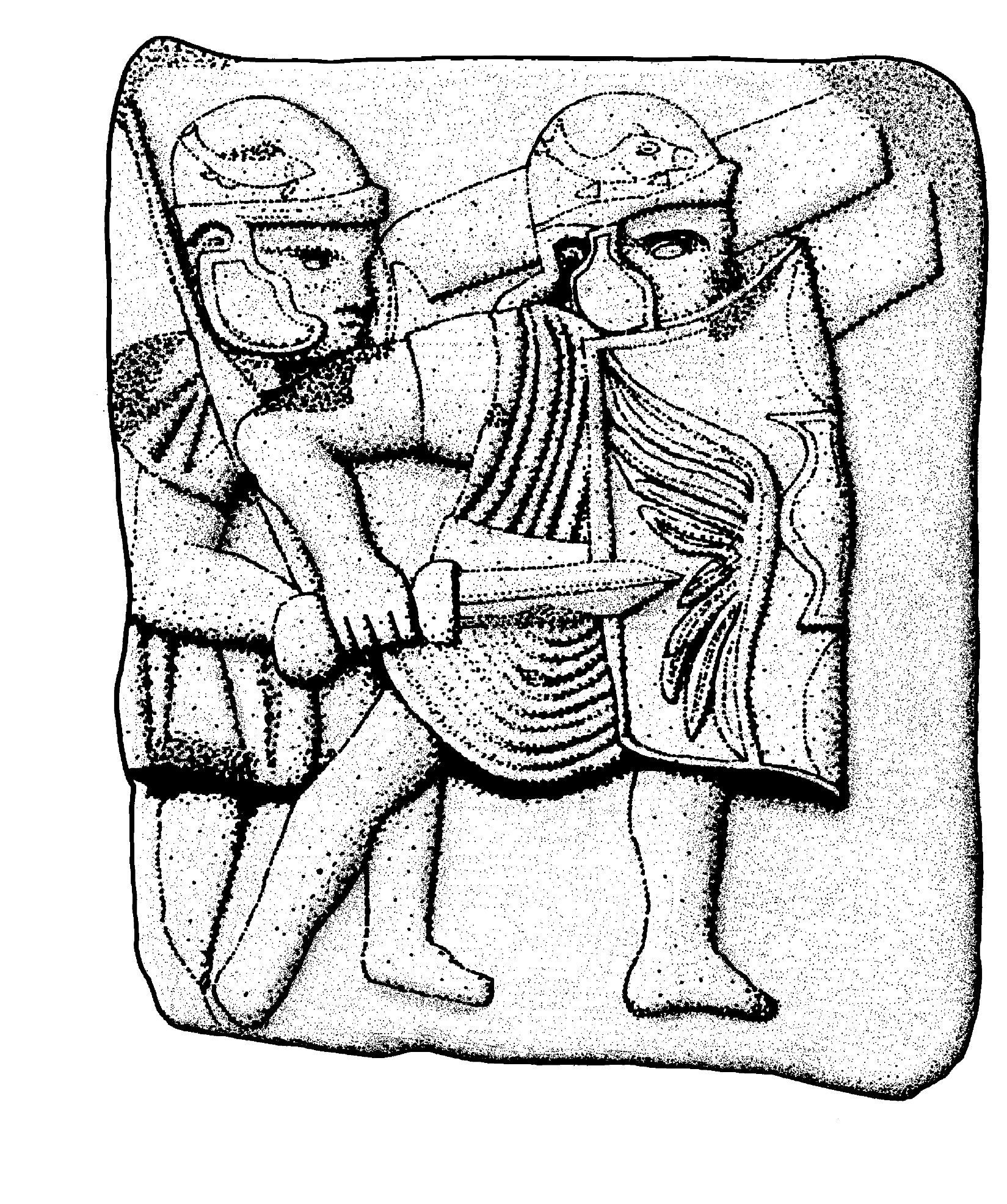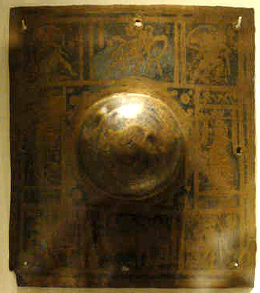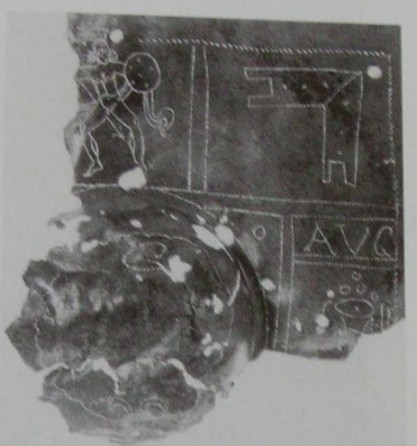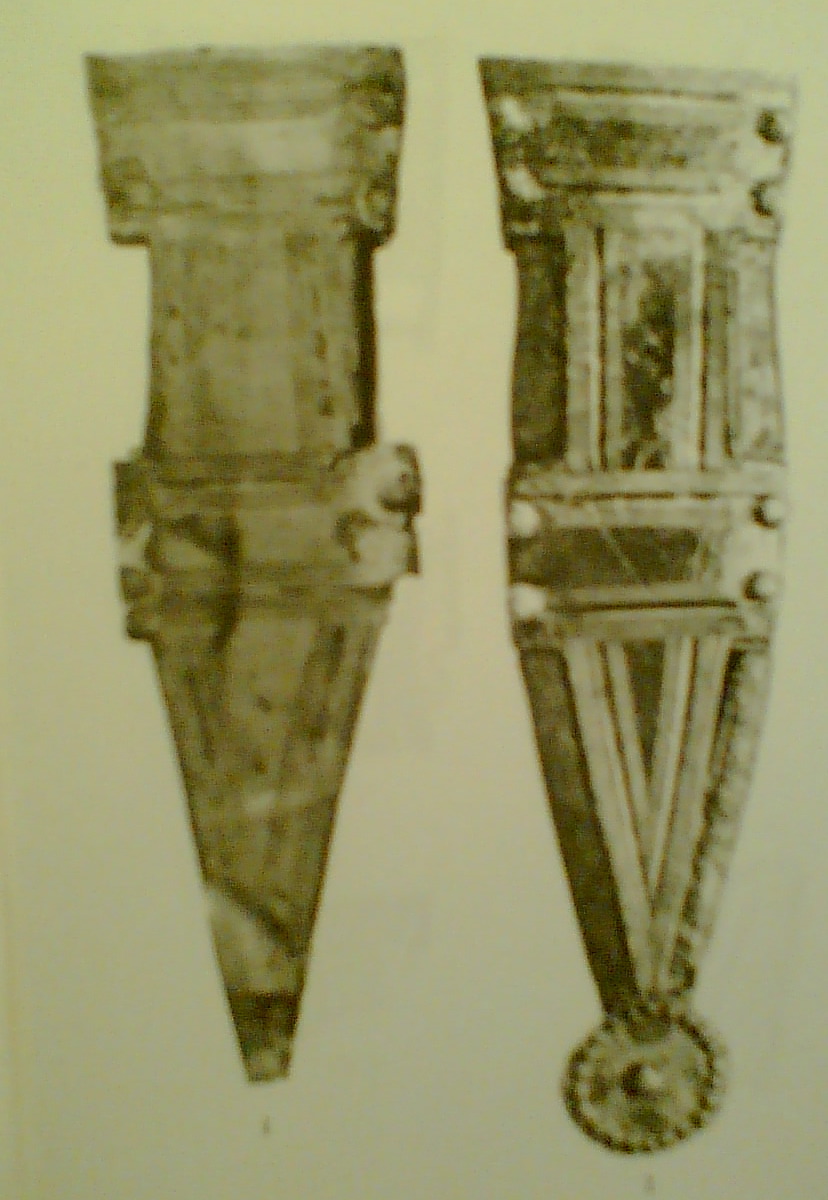| Unit Specific Items | Crispvs (Paul Geddes) |
 |
In creating what we hope is an accurate image of the Roman soldier we are often faced with a series of choices, not just in terms of what specific armour or helmet we choose but a host of other things as well. Often the choice of what a person ends up purchasing come down to a mixture of what they see others carrying and what they can afford. This often translates into being a matter of the 'flashiest' kit a person can get their hands on. We tend to want THESE belt plates (because they look nice) or THIS helmet (again because of how it looks) and so on. However, we should also be thinking about what we are portraying. Supposedly we portray soldiers either of Legio XIIII GMV or Cohors I Batavorum. What did these soldiers actually look like? Leaving aside the obvious anacronisms of our own physical conditions and ages, how much does the equipment we use actually reflect the equipment used by the units we seek to portray? Evidence is steadily emerging to suggest that shield blazons and totemic symbols were not the only things which made soldiers of different units look different to each other. The examples of the possible use of helmet wigs and red face paint by Batavian soldiers are now fairly well known but what other things might we also find when we look at the assembled state of the evidence? As we learn ever more about Roman military equipment and buildings, some trends have emerged which strongly suggest that some items could have been unit specific, and might therefore be inappropriate in reconstructions of other units. A well known example of this is the presence of figural type 'B' belt plates in Britain (these are the embossed plates featuring wolf and twins, acanthus leaves, chasing animals and emperor and cornucopia motifs). Studies have shown that these plates have been found mainly on sites associated with Legio II Augusta. Care should be exercised in any conclusions here, though, as a cast item featuring a chasing animal motif [fig. A], which was almost certainly used for stamping the design into belt plates, was found near Colcester, a site associated with Legio XX. In addition to this though, a number of examples of a fifth type of figural plate, featuring winged thunderbolts have been found at Vindonissa and seem to be specific to that site, suggesting that these might have been specific to a particular unit. |
Figure A. Sheepen stamp |
Figure B. Mainz Gallic I |
Figure C. Aquincum Gallic I |
|
|
Some other items however, stand out as better candidates for unit specific items. The most obvious of these is the example of the copper-alloy Imperial Gallic type 'I' helmets. Four of these helmets are now known, one from Mainz [fig. B], one from Budapest [fig. C], one which was part of the collection of Axel Guttmann (of unknown origin but probably the Balkans) [fig. D], and one in the collection of the Dorestad Museum whose findspot is also unknown to me [fig. E]. In addition to all being made of copper-alloy and having deep, sharply angled neck guards, these helmets all feature fittings for a central 'front to back' crest and side plumes. The central crest attachment on the Budapest (or 'Aquincum') helmet takes the form of an anther with a slot in the top, like an elongated version of the type found on Coolus helmets. The Mainz helmet is normally reconstructed with a 'twist on' type crest attachment but when it was found no central crest holder was present but a circular patch of solder showed that there must have been one. The Guttmann and Dorestad helmets have similar patches of solder where they have also lost their crest attachments. Given the similarity of these three helmets to the Aquincum helmet it seems reasonable to think they may originally have had anther type crest fittings like that helmet. All four of these helmets then, are made of copper-alloy, possibly featured anther type crest supports and had fittings for side plumes. However, the helmet from Mainz also has an inscripion, showing it to have belonged to a soldier of Legio I Adiutrix. Perhaps not coincidentally Budapest/Aquincum was the base for Legio II Adiutrix, making the Aquincum helmet likely to have been owned by a soldier of Legio II Adiutrix. In addition to these, the grave stele of Gaius Castricius Victor, of Legio II Adiutrix, also from Budapest, shows the soldier wearing a helmet with a central crest and what are probably side plumes [fig. F]. | |||
Fig. D Guttman Gallic I |
Fig. E Dorestad Gallic I |
Fig. F Castricius Victor Head |
|
|
All this shows then, that these Imperial Gallic type 'I' helmets should probably not be used in reconstructions of any units other than the two Adiutrix legions (which had both been converted from Marine units in the AD60s). Further evidence for particular cresting arrangements comes from Caesar's mention of his fifth legion, who were known as the 'Larks' (alaudae), due to their particular style of crests. In addition to these, helmets shown being worn by soldiers depicted on a column base from Mainz, dating to the Flavian period, feature fishes in place of the normal 'eyebrow' decorative reinforcement [fig. G]. This may also be intended to show a specific unit. |
|||
|
Fig. H Junius Dubatius boss |
Fig. I Vindonissa boss fragment |
Fig J pugiones |
|
Other unit specific items can also be identified. The well known shield boss of Junius Dubatius [fig. H], currently in the Museum of Antiquities in Newcastle upon Tyne, carries the inscription 'LEG VIII AVG' showing him to have been a member of Legio VIII Augusta. A fragment of a very similar shield boss [fig. I], on which the abbreviation 'AVG' was inscribed in the same place as on the Tyne boss, was also found at Vindonissa, where Legio VIII Augusta were stationed for some time, making it likely that this particular style of boss was specific to Legio VIII. Another possible example of an item limited to a particular unit is a type of dagger sheath which combines side guttering with a type 'B' front plate engraved with vertical and horizontal lines. An example of this type has been found in Nijmegen in a context which possibly links it with Legio X Gemina. Similar sheaths are known from the area of Spain where Legio X Gemina was stationed in the latter half of the first century BC [fig. J - Nijmegen sheath plate on left, almost complete Iberian sheath on right]. Moving away from equipment, other items could also be unit specific. At the Carlisle Millenium Conference in 2004, the late Dr Vivian Swann demonstrated that specific pottery forms were associated with particular units. Her study of pottery from sites associated with Legio II Augusta and Legio VI Victrix showed that both units could be reliably identified from their pottery. She suggested that pottery was made by soldiers, who learned the forms for their pottery from other soldiers in the same unit. When the unit moved, the type of clay being used changed but the forms of pottery being made remained the same. The particular shapes produced differed between the two units. Although Dr Swann told me that she had only studied the pottery of these two units, she thought it reasonable to suppose that most other units would have done the same and thus their particular pottery would probably be identifiable as well. An example she gave was that of 'wall sided' mortaria, which are archaeologically associated with Legio XIIII.
Finally, looking at buildings, it is evident that units differed in their building practices. It is well known that Hadrian's Wall was built by soldiers of Legiones II Augusta, VI Victrix and XX Valeria Victrix, with each unit responsible for a specific sector of the wall. The eastern and central sectiors of the wall were originally built in stone, but the western sector the wall was originally built with turf. It has been suggested that this was because of the lack of good building stone in that region but, given that that sector was rebuilt in stone only a few years later by Legio VI Victrix, it may be that Legio XX Valeria Victrix, who were originally responsible for the western sector, had not started building fortifications in stone at that stage and were still sticking with turf and timber construction methods. Looking at military buildings, the Metchley Fort, which today is largely covered by Birmingham University featured barrack blocks where the centurions' quarters at the end of each block were separated from the rest of the block by a corridor or alleyway. Although this is within the region that Legio XIIII were active in the post invasion phase, this arrangement is consistent with sites associated with Legio XX. There are indications (such as the presence of fragments of wall sided mortaria) that the fort was originally built by Legio XIIII but the corridors are a later feature, cut through the original plan. Buildings excavated at attested Legio XX sites show the same feature, strongly suggesting that this was a standard building practice in Legio XX which differed from the building practices of other units. The suggestion here is that soldiers of Legio XX occupied the Metchley site after Legio XIIII had moved on and adapted the buildings to their own pattern, based on the changes to the buildings in the second phase of the site. It is evident then, that every unit did not look the same and did not do things the same way, and as we discover more, the evidence for this is likely to increase. We may not know what any specific unit looked like but we can now state with confidence that there were differences between units and we can now identify some of these features. Acknowledgments and sources of images Figure A - M.C. Bishop Figures B,C,D and E - Romanarmy.com Helmet database Figure F - Romanarmy.com Imagebase Figure G - M.C. Bishop Figure H - Timetrips.co.uk Figure I - Roman-artifacts.com Figure J - J Obmann - 'Studien zu roemischen Dolchscheiden des 1. Jahrhunderts n. Chr.' |
|||
